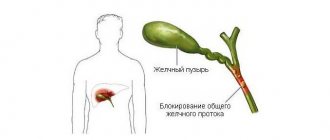The pituitary gland is an endocrine gland located in the sella turcica (a formation in the human skull). Despite its miniature size, it controls many functions in the body. It is the pituitary gland that produces hormones that are responsible for the functioning of the entire endocrine system. Nature has reliably protected this gland from external influences, but internal factors can still cause pathological changes. One such problem is pituitary adenoma. It can be recognized by hair loss, infertility, changes in appearance, sexual dysfunction and many other signs.
What is a pituitary adenoma?
Pituitary adenoma is a benign round tumor in the brain. It is localized in the area of the sella turcica, near the base of the skull bones. WHO statistics state that adenoma accounts for 80% of all pituitary tumors. It occurs in 1 in 50,000 people, but due to the lack of comprehensive diagnostics, the actual numbers may be much higher.
A pituitary adenoma is a microformation that for a long time may not report itself with any obvious symptoms. It progresses slowly and can only be detected in the initial stages through a detailed diagnostic examination. Adenoma can occur at any age, but most often it affects people 30-60 years old. Rarely occurs in children.
Due to the long-term absence of any symptoms, pituitary adenoma can cause serious endocrine problems: hyperprolactinemia, obesity, Cushing's syndrome. Because of this benign tumor, the synthesis of hormones in the pituitary gland is suppressed, which disrupts the entire endocrine system. Also, the formation, which increases in size, compresses the adjacent brain tissue, causing migraines, epileptic seizures, decreased visual acuity and much more.
Symptoms of pituitary adenoma
Most often, pituitary adenoma can be diagnosed based on ophthalmic and neurological signs that arise due to increasing pressure on intracranial structures. It can also be hormone-producing - in this case, endocrine-metabolic syndrome develops.
Ophthalmo-neurological syndrome
The degree of manifestation of ophthalmo-neurological syndrome in pituitary adenoma depends on the volume of the tumor and the direction of its growth. Gradually, a person develops a headache, visual fields decrease, and eye motor activity is disrupted. Migraine occurs due to constant pressure on the sella turcica. It is dull, not accompanied by nausea, and its intensity does not depend on the position of the body.
Headache with pituitary adenoma usually spreads to the temples and frontal region. It is practically not controlled by painkillers. Due to intensive growth, hemorrhage may occur in the tissue, which will lead to a significant increase in headaches.
Limitation of visual fields occurs due to compression of the optic nerves that pass directly under the pituitary gland. Long-term such exposure can lead to atrophy of these nerves and blindness.
As a result of such exposure, ophthalmoplegia and diplopia develop, and visual acuity is significantly reduced. If the adenoma grows downward and affects the ethmoid or sphenoid sinus, the patient may complain of nasal congestion. As the tumor grows predominantly upward, the structures of the hypothalamus are damaged, which can cause disturbances in consciousness.
Endocrine metabolic syndrome
Pituitary adenomas can be hormone-producing. In this case, a person experiences endocrine disorders. Their manifestations depend on the hormone, which becomes abundant in the body. Due to pituitary adenoma, the level of:
- Somatotropin
. This is a growth hormone that causes signs of gigantism in children and acromegaly in adults. The skeleton gradually changes, diabetes mellitus, obesity, diffuse or nodular goiter develop. Manifestations of hirsutism and hyperhidrosis often occur, and nevi and papillomas grow on the skin. - Prolactin
. Women experience menstrual irregularities, infertility, increased body weight, problems with acne, and seborrhea. In men with elevated prolactin, ophthalmo-neurological symptoms and impotence develop. - ACTH
. With elevated corticotropin levels, patients are diagnosed with Cushing's syndrome. The disease can be recognized by bright red stretch marks on the body and skin pigmentation. An adenoma that produces ACTH is dangerous - it has a tendency to malignant degeneration with subsequent metastasis. - TSH
. If the adenoma produces thyrotropin, hyperthyroidism develops. The patient complains of rapid heartbeat, decreased body weight, and excessive sweating. - Gonadotropic hormones
. Mostly nonspecific symptoms occur, such as headache, galactorrhea.
Endocrine diseases. Self-diagnosis
Murzaeva Irina Yurievna
Endocrinologist, Preventive Medicine Doctor
September 3, 2017
Unfortunately, the practice of annual medical examinations and mass disease prevention in kindergartens and schools are gradually becoming a thing of the past. Remember, they used to give fish oil, iodine preparations - Antisturmin, etc. for breakfast. Health magazine taught people all over the country to self-diagnose breast tumors, provide first aid to themselves and others... Times change, not always for the better, but this is a separate topic. The motto of “our intertime” is help yourself.
Today I will tell you how to suspect one or another endocrine disease when examining your own body . Just suspect and consult a doctor, and not start treating yourself!
Information about this mysterious photo is below. 
So let's start with SKIN .
It occupies a huge surface area of the body, performs many functions and is the first to respond to changes in the body.
Dryness, peeling (scales) of the skin of the face, torso, arms and legs
- often this is a sign of hypothyroidism (reduced thyroid function), and this is most clearly visible in the dryness and flaking of the elbows, sometimes as a “flour” type, dry elbow with a white coating;
- It can also be a sign of severe dehydration. Take a closer look to see if you have any new wrinkles;
- allergies can always be distinguished - peeling with bright pinpoint rashes and itching;
- peeling and cracking of the fingers - often this is a manifestation of anemia or liver pathology (fatty hepatosis and other diseases);
- But if your feet are dry and flaky, get checked for fungal diseases and diabetes.
What a seemingly insignificant symptom, but so much information.
Acantosis nigricans - I can only write here in Latin, the symptom is extremely important, this is the appearance of dark-colored foci of pigmentation (similar to a tan) in places where clothing rubs: neck, armpits, groin area, under the breasts, on the elbows, a sign of incipient diabetes, or prediabetes. This symptom is also called a sign of insulin resistance (the body’s metabolism of the hormone insulin, which is responsible for the absorption of sugar from food, is disrupted). The symptom is terrible, it also happens in children, and is often a sign of hereditary insulin resistance.
You need to go to an endocrinologist as soon as possible!
Pigmentation is a very broad concept; spots come in different colors and sizes.
A bronze tint of the skin over the entire surface of the body, especially increasing in winter, is a sign of another formidable disease - adrenal insufficiency. It is urgent to donate cortisol and ACTH blood.
Pigmentation with uneven edges, a light brown tint, that appears after childbirth - chloasma, this is a manifestation of a violation of skin nutrition. It is possible that you had iron deficiency anemia during pregnancy; you need to check again to see if there is an iron deficiency. If there are disturbances in the body’s oxidative-antioxidant system (primitively, “a lot of harmful radicals” have accumulated in the body and they damage the skin), it is necessary to resolve the issue of taking alpha-lipoic acid and check liver function.
Pigmentation in women 55+, 60+ is finely dotted, bright brown, which everyone perceives as a tan - a sign of skin aging and a deficiency of sex hormones. It also doesn’t hurt to check for anemia.
Bright brown pigmentation of the lower eyelid can also be a sign of anemia, or, less commonly, adrenal dysfunction.
Pigmentation expressed only on the anterior surface of the skin of the legs (without itching) is often a sign of a “hidden increase” in blood sugar - you need to look for diabetes.
The appearance of bright red spots on the body, often small 2-3 mm - “ruby spots”, a sign of liver dysfunction (fatty hepatosis and other diseases).
Pappules, not acne, on the eyelids, face - they are called xanthomas, these are small wen, it is clear that this is a disorder of fat metabolism and the lipid profile must be checked. They happen even in 7-8 year old children - no one has abolished hereditary dyslipidemia and the child may have cholesterol of 8.0 mmol/l.
INCREASED SWEATING (HYPERHIDROSIS) is a very common symptom.
If the sweating is local - only the hands or only the legs, or only the armpits, this is unlikely to be an endocrine pathology - it is often a dysfunction of the sympathetic nervous system. But sweating all over the body can be a symptom of diffuse toxic goiter, and increased sweating of the scalp is a symptom of vitamin D hypovitaminosis (like rickets).
HAIR
Thinning and hair loss are often the first sign of anemia! This may also be a symptom of hypothyroidism, calcium metabolism disorders and disturbances of other microelements important for hair condition: zinc, selenium, manganese and copper. Hair loss can be a sign of progesterone deficiency (due to cycle disruption in women). And even a decrease in progesterone in men can result in hair loss.
Early gray hair is often the first sign... ANEMIA, sometimes copper deficiency.
Thinning and hair loss at the age of 50+, 60+ is often a deficiency of sex hormones, rather than their excess (previously, in women, this symptom was associated with excess androgens).
But male pattern hair loss in young women, this is hereditary androgenetic alopecia, is often the first symptom of the onset of PCOS (polycystic ovary syndrome).
In men with androgenetic alopecia, everything is simpler - it is often a deficiency of testosterone, and not its excess, as previously thought.
Hair loss in children! – this should be a paradox (a growing child should not have alopecia). This is either a sign of rickets (after 1 year of life, rickets is called osteomalacia), or anemia, or, most often, it is insulin resistance! It is extremely rare, but it happens that it is associated with an autoimmune disease.
Patchy hair loss is a sign of extreme stress, both in children and adults!
In teenage girls, hair loss may be associated with ovarian dysfunction and progesterone deficiency.
Loss of the outer third of the eyebrows is often a sign of iodine deficiency (classic) and hypothyroidism.
Sometimes patients complain about changes in the hair structure, “they were curly and began to straighten sharply” - these are not miracles, this is a violation of the exchange of sex hormones, especially if the woman has been taking COCs (contraceptives) for a long time. In this case, her pituitary gland and ovaries fell asleep, and a deficiency of estrogen and progesterone developed.
And now the most interesting thing is - we take an ordinary centimeter in our hands and begin to measure, what?
- Waist circumference Ladies, a waist circumference of more than 80 cm is incipient obesity. For men – more than 92 cm, “hello obesity.” Children have individual tables for their waist circumference according to height and age; I will not give them here. For the same purpose, pinch yourself under the shoulder blade :D:) If the skin-fat fold in this area is more than 2 cm! This is a sure step towards obesity! When visiting a doctor, it is better to measure the skin-fat fold with a calipermeter; this is a more accurate measurement method.
- Wrist circumference Who said you have a “big bone”? Ladies, wrist circumference: 16-17 cm is the norm. “Thin bone” is less than 16 cm, “large” is more than 17 cm. In men, the norm is 16-20 cm, respectively. But in men it is better not to measure the circumference of the wrist; it is better to determine body composition using bioimpedanceometry - many men have a well-developed or inflated muscle group and it is necessary to look at the real proportions of muscle/fat tissue.
- You can measure the proportion, the ratio of waist circumference / hip circumference. WC/BV more than 0.85 in women and more than 1.0 in men is visceral obesity - obesity of internal organs, indicates the risk of developing metabolic syndrome (obesity with metabolic disorders of both fats and carbohydrates).
You can put the centimeter aside for now;)
LOOKING IN THE MIRROR
Strengthening of nasolabial folds and the appearance of wrinkles outstripping the rate of age-related changes is a sign of a deficiency of sex hormones; it would be good to check with a gynecologist-endocrinologist.
Drooping, swollen upper eyelid - monitor your blood pressure and check your kidneys. In more rare cases, this is a manifestation of hypothyroidism. Swelling and at the same time a change in the shape of the eyes (a look of extreme surprise) is a symptom of dysfunction of the thyroid gland (diffuse - toxic goiter).
Sagging of the oval of the face and the appearance of a double chin are a manifestation of a deficiency of sex hormones and the beginning of a decrease in growth hormone.
NAILS
Ribbed nails, thin and brittle - again everything is primitive, we check for anemia and calcium metabolism disorders. But the flattening and whitening of the nail plates - we check the heart muscle.
So, if all the deficiencies in the body have been eliminated :), but the nails are still thin, the skin is dry and the hair is thinning - it’s time to check the Omega-3 index in the blood, yes, it is the deficiency of healthy omega-3 fats in the body that can be the cause of ongoing skin problems , nails and hair.
The dose of Omega-3 taken will be different for everyone, minimum 2000 mg per day and higher! It is necessary to monitor the omega-3 blood index. That’s why I published this stunning photo of an Eskimo woman at the beginning of the article - gorgeous skin and facial proportions, which means there are no problems with omega-3 and sex hormones:
Finally…..
I really want to talk about the famous “bones” on women’s legs
“they say, I walked around in heels all my youth”;). A woman should walk in heels all her life, and “bunions at the base of the big toe” are a sign of a severe violation of vitamin D metabolism! And, accordingly, weakness of the foot muscles (sarcopenia), so “the bones spread in different directions”, there are no growths there! Get tested for vitamin D deficiency and treat hypovitaminosis D as soon as possible and in large doses.
To be continued…….
Main reasons
Research has so far not yielded results in studying the exact causes of the development of pituitary adenoma. Doctors continue to develop possible mechanisms of development. It is believed that the following factors may contribute to the occurrence of this pathology:
- Consequences of head injuries;
- Previous intrauterine infections;
- Brain infections;
- Frequent pregnancy in the mother;
- Hereditary predisposition;
- Taking hormonal medications;
- Frequent stress, exhaustion of the nervous system.
Statistics from the World Health Organization say that this formation occurs 2.5 times more often in women. In children, adenomas are diagnosed extremely rarely.
Diagnosis of pituitary adenoma
Typically, a neurologist, ophthalmologist and endocrinologist are involved in the diagnosis of pituitary adenoma. Patients turn to the first two specialists when ophthalmic and neurological symptoms develop, and to the last one when endocrine and metabolic symptoms develop. For a more accurate diagnosis, consultation with all these doctors will be required. Standard examination for pituitary adenoma includes:
- X-ray of the sella turcica
. Shows the contour, size, shape of the pituitary gland, signs of destruction of the dorsum sella; - MRI of the brain
. Allows you to identify microscopic neoplasms in tissues and evaluate its blood circulation; - CT scan of the skull
. Reflects a more precise localization of the adenoma in the brain; - Angiography
. It is prescribed if MRI and CT did not show an adenoma, but there are signs of its presence. The study allows us to identify tumors of the smallest size; - Hormonal blood test
. The concentrations of prolactin, somatotropin, cortisol, ACTH, TSH are determined; - Ophthalmic examination
. It is necessary to check visual acuity, the condition of the fundus, and the optic nerve; - Blood chemistry
. Determines the general condition of the body. It is important to check your glucose level - its increased value indicates a metabolic disorder.
Diagnosis of increased pituitary gland function
First of all, when diagnosing this disease, our clinic No. 1 Viterra Belyaevo suggests turning to laboratory tests. Their goal is either to establish an increased level of hormones produced by the pituitary gland, or to determine the changed level of biochemical parameters controlled by certain pituitary hormones. It is also possible, using modern equipment, to perform x-rays of the skull bones and magnetic resonance imaging of the brain to detect pituitary adenoma.
Treatment methods used
Standard treatment for pituitary adenoma consists of drug, radiation and neurosurgical therapies. The optimal method of exposure is determined based on the diagnostic results: it depends on the patient’s condition, the characteristics of the tumor itself, and the presence of concomitant diseases.
Drug therapy
Drug therapy is prescribed in 90% of cases. The drugs help get rid of the symptoms of the disease and improve the patient’s well-being. Initially, vitamin and restorative complexes are prescribed. Next, you need to determine the type of tumor:
- for prolactinomas, dopamine agonists or ergoline drugs are prescribed,
- for somatotropinomas - somatostatin agonists,
- for corticotropinoma - steroidogenesis blockers.
If necessary, hormone replacement therapy is performed. If the chosen treatment regimen does not bring results for a long time, then a more radical method of treatment is selected: radiation therapy or surgery.
Radiation therapy
For microadenomas, proton, gamma and remote therapy are used. The essence of the tactic is the introduction of a radioactive substance directly into the pathological area. Thanks to this effect, it is possible to stop the growth of the tumor and achieve regression. Typically, radiation therapy is performed when surgery is not possible and the patient refuses surgery. After such exposure, the pituitary adenoma gradually decreases in size and can be completely destroyed.
Surgical intervention
If the tumor is large and associated complications develop (hemorrhages, cyst formation, visual impairment), its removal using the transcranial method is indicated. The operation involves craniotomy. In some cases, intervention may be performed using endoscopic techniques.
The choice of specific treatment tactics mainly depends on the type of tumor. For prolactinoma, radiation exposure is practically useless, while for corticotropinoma it is highly effective. If the tumor does not cause any disturbances in the body and the patient does not complain of deterioration in health, doctors choose a wait-and-see approach.
Prognosis and prevention
Pituitary adenoma is a benign brain tumor. However, as its size increases, it can take a malignant course: it begins to compress nearby brain tissue and its anatomical formations. Typically, after surgery, the patient’s hormonal levels are restored, and he gets rid of the symptoms of the disease. For adenomas whose diameter is more than 2 centimeters, there is a possibility of relapse. They usually occur within 5 years after the intervention.
The prognosis for pituitary adenoma depends on its type. With microcorticotropinomas, about 85% of patients completely restore endocrine functions. With prolactinomas and somatotropinomas, the probability of recovery is lower - about 20%. Such neoplasms require constant use of corrective medications.
There is no primary prevention for pituitary adenoma. Doctors have still not been able to determine the exact mechanism of development of the pathology. Secondary prevention consists of early diagnosis of the disease, regular blood donation for hormonal testing, and maintaining a healthy lifestyle. Every effort must be made to prevent head injury. If you suspect you have a pituitary adenoma or want to cure an existing disease, contact the Medscan medical center. Experienced doctors will be able to help you with this.
Diagnostics
During the initial appointment, the doctor conducts a detailed examination of the patient, collects complaints and anamnesis, and also clarifies the necessary information about the state of health. As a rule, complaints are associated with hormonal imbalance.
To confirm the diagnosis, an MRI of the pituitary gland is prescribed, if necessary, with a contrast agent. Patients may require consultations with various specialists: neurologist, endocrinologist, mammologist, neurosurgeon.
In some cases, computed tomography and blood tests are additionally prescribed to determine the level of pituitary hormones.
Hormonally inactive microadenoma, as a rule, is detected randomly, due to the fact that there are no symptoms of pathology.









